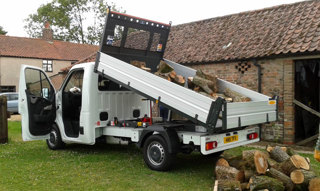Review
By Richard Yarrow
The original Twingo was a huge hit in Europe, with more than 2.3 million sold from 1992-2007. However, as it was never built in right-hand drive it wasn’t officially sold in Britain. It’s fair to say that when its successor arrived on our shores the reception was chilly. Less than 20,000 were sold over six years.
Industry buzz about the third-generation car has been high since its Geneva Motor Show debut in March. It’s a characterful design – very like the Fiat 500 in profile – while its rear-mounted engine is a USP. Renault UK won’t talk volumes, but with just 1,100 of its predecessor selling last year, demand can only go in one direction.
Customisation will be a large part of the appeal. A variety of personality packs feature colour choices on the centre console and air vent surrounds, steering wheel inserts, front grille, side strips and door mirrors. Peugeot has made these retro-fit on its new 108, creating a fresh dealer revenue stream, but Renault has ruled this out for the Twingo.
Besides its funky design options, it has much to recommend it. The rear engine means the front wheels can turn to 45 degrees, giving it exceptional manoeuvrability and a class-leading turning circle. It also means that while the MkIII is 10cm shorter than its predecessor, it’s actually 23cm longer inside. The Twingo is now five-door only and smart interior packaging enhances its usability. For example, the 50:50 split rear bench coupled with the fold-flat front passenger seat allows loads of more than 2.3 metres to be carried.
Renault has also thought hard about spec and pricing. For example, rear door bins are a £20 option. That’s a good idea – not everyone will want them.
There are two engines, a 1.0-litre 70bhp naturally aspirated and a 900cc 90bhp turbo, both three-cylinder. Despite the ‘turbo’ moniker, the more powerful Twingo is not in any way sporty, with a 0-62mph time of 10.8 seconds. The entry-level unit (14.5 seconds) is actually the more likeable to drive, in part because the suspension set-up is more comfortable than the turbo’s, which felt quite crashy over poorer road surfaces.
Trim levels are Expression, Play and Dynamique. Demand for the entry-level car will be tiny, with sales split fairly equally between the other two. Play is a £500 step up.
All trims get Renault’s new smartphone-based infotainment system, R&Go, as standard. Rather than fitting a screen into the dashboard, R&Go uses the display on iOS and Android devices. Simply download the free app, Bluetooth the car and phone together, and clip the latter into the universal cradle.
In principle, it sounds fine, but on the Twingo’s media launch many journalists (this one included) reported problems with the app freezing and crashing. It’s to be hoped any gremlins are sorted before cars arrive in showrooms because dealers will get the backlash.
What’s been said about the Renault Twingo
Daily Telegraph
Unusual mechanical layout gives advantages in space and steering lock, but also makes for a better drive. The jury’s out on quality and it isn’t the cheapest small hatch, but it is one of the most accomplished and probably one of the best in urban centres.
What Car?
There’s loads going for the Twingo. It manages to blend something of the Fiat 500’s retro style with an interior that’s as spacious as any other in the class, and in some ways is more versatile. Factor in the clever smartphone-based infotainment and it’s also well equipped, while a four-year, 100,000-mile warranty and – if you go for finance – free servicing will help make running costs competitive, too.
Factsheet
- Price
- £9,495-£11,695
- Engine
- 1.0-litre: 70bhp; 0.9-litre turbo: 90bhp
- Performance
- 0-62mph 10.8-14.5secs, top speed 94-103mph
- Transmission
- 5sp man
- Efficiency
- 65.3-67.3mpg, 95-99g/km CO2
- Key rivals
- Fiat 500, Toyota Aygo, VW Up















